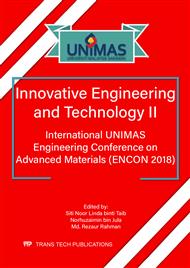p.3
p.9
p.21
p.29
p.37
p.49
p.57
p.69
1D Compressibility of High Moisture Content Clays Solidified with Small Cement Dosages
Abstract:
Soft soil is normally associated with high moisture content and fine content which result in high compressibility and low strength. However, a proper treatment such as solidification by means of hydraulic binders is required in order to be usable for beneficial purposes (e.i backfilling). This paper experiments the effects of cement treatment on the one-dimensional (1D) consolidation behavior of a high moisture content (MC) soil (twice liquid limit), based incremental loading test. The effects of Portland cement addition are evaluated for dosages ranging from 0 % to 15% by dry mass of soil. After curing, it was found that 10 % cement was required to make meaningful reduction in MC for kaolin while no major difference was noted between after mixing and after curing for DMS. In kaolin the moisture content decreased by 6.5 % for each 5 % increment of cement. Similarly, the MC of DMS reduced by 10 % for each 5 % increment. Thus, the reduction, immediately after mixing, in DMS was higher by 3.5 % compared to kaolin. The most evident effect of the treatment feasibility is the development of a cementation-induced yield stress after 7 days of curing: the bigger the cement dosage, the greater the yield stress and the greater the vertical effective stress that can be sustained at any void ratio. The maximum yield stress at 15 % cement content was found 30 kPa and 70 kPa for DMS and kaolin respectively. The highest void ratio values were found in the control specimens (3.77) in kaolin and DMS (5.66) whereas the lowest void ratio was corresponded to 15 % cement 3.35 and 4.65 for kaolin and DMS respectively. The control specimens decreased dramatically from 38.93 m2 / KN - 0.13 m2 / KN and 36.03 m2 / KN - 0.19 m2 / KN for kaolin and DMS specimens respectively. The results correspondingly provide a consistent depiction of the effects of cement treatment on MC, void ratio and coefficient of volume compressibility. The effectiveness of the treatment is obvious compared to the untreated soil.
Info:
Periodical:
Pages:
21-28
Citation:
Online since:
June 2020
Authors:
Keywords:
Price:
Сopyright:
© 2020 Trans Tech Publications Ltd. All Rights Reserved
Share:
Citation:


